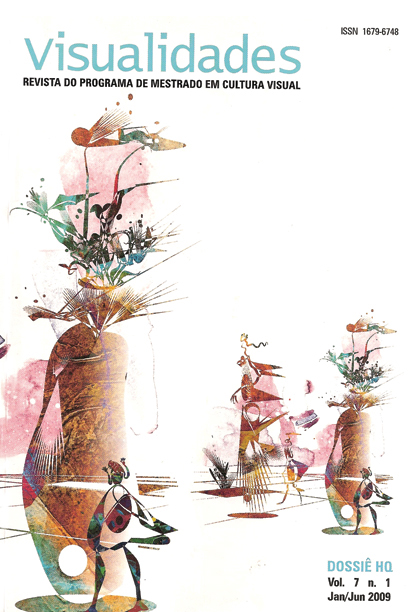Tereza Bicuda: a senhora, a diaba e a louca - DOI 10.5216/vis.v7i1.18132
DOI:
https://doi.org/10.5216/vis.v7i1.18132Abstract
Este projeto de pesquisa pretende explorar a lenda de Tereza Bicuda através da análise do conteúdo das diferentes narrativas (imaginários visuais) encontradas sobre ela. O elemento narrativo é rico para entender essas representações e transformações. Antes de analisar “as estórias” propriamente ditas, será preciso investigar a formação histórica da região, levantar a bibliografia existente e, posteriormente, resgatar os temas e as narrativas. Aproveitarei os resultados da pesquisa de campo já realizada pela historiadora Nei Clara de Lima – “Histórias da gente de Jaraguá”, 2003, (9 versões) e farei a coleta de novas histórias mais ligadas às preocupações da cultura visual. Como o mito Tereza Bicuda confere visibilidade à cultura local. Como as diferentes representações de Bicuda pode nos ensinar sobre as expressões simbólicas de uma cultura e da realidade histórica local. Como os atores da população de Jaraguá vêem sua própria história. Que traços identitários (ou estereotipias) as diferentes narrativas de Tereza revelam. Como diferentes atores da região re-interpretam o seu passado. Como as narrativas fantásticas da tradição oral popular podem ser estudadas na perspectiva da cultura visual. Qual a importância desses estudos para a linha Culturas de Imagem e Processos de Mediação? Uma educação estética popular? Ao longo do processo da pesquisa é minha intenção constituir um banco de dados, reunindo narrativas relativas à apreensão e à reinvenção do mito Tereza Bicuda no tempo e no espaço local para utilização estética pedagógica intertextual entre visualidade e cênica.
Palavras-chave: Cultura popular, teatro, Tereza Bicuda, memória
Downloads
Downloads
Published
How to Cite
Issue
Section
License

This work is licensed under a Creative Commons Attribution 4.0 International License .
Authors who publish in this journal agree to the following terms:
a. Authors retain the copyright and grant the journal the right of first publication, with the work simultaneously licensed under the Creative Commons Attribution 4.0 License which allows the sharing of work with acknowledgment of authorship and initial publication in this journal.
b. Authors are authorized to take additional contracts separately, for non-exclusive distribution of the version of the work published in this journal (eg publish in institutional repository or as a book chapter), with acknowledgment of authorship and initial publication in this journal.
c. Authors are allowed to publish and distribute their work online (eg in institutional repositories or on their personal page) after the initial publication in this journal, as this can generate productive changes, as well as increase the impact and citation of the published work ( See The Effect of Free Access).
Every effort has been made to identify and credit the rights holders of the published images. If you have rights to any of these images and have not been correctly identified, please contact the Visuals magazine and we will publish the correction in one of the next issues.






